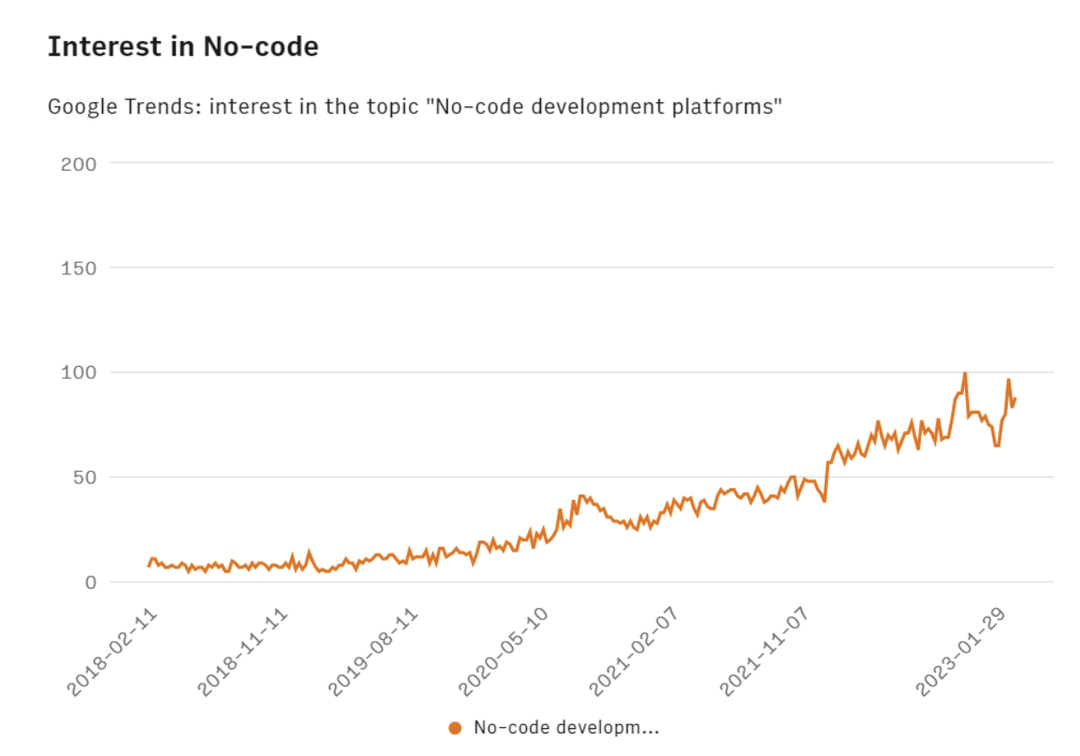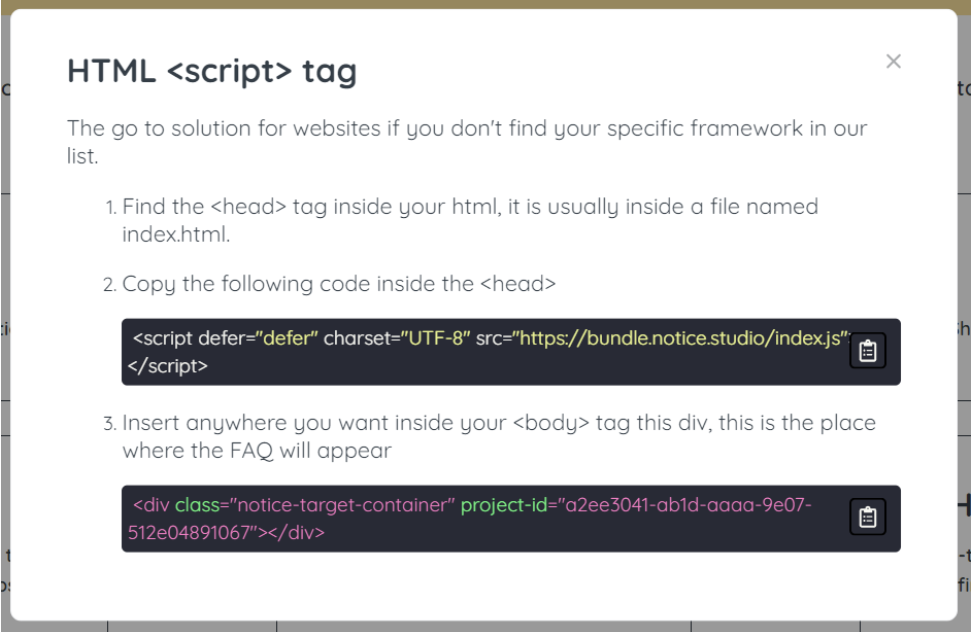Here's the thing: front-end developers should treat no-code solutions as their allies.
This endless debate of code vs. no code leads nowhere. The best solution is to combine the two of them.
And for that, we need a block system for content.
The current scenario
Right now, startups have two options:
- Creating their website on a no-code platform like Webflow
- Or coding their website from scratch
The former might lead to getting your website out there faster, but you'll depend on your chosen platform. This means you'll pay whatever price they choose and build around their imposed constraints.
The latter gives you full freedom. You can create literally anything you want. But full flexibility means you'll need more time to get your website up and running.
To be honest, none of these options are perfect. But this is not an issue with no code. After all, interest in no-code has been growing consistently over the years. The issue lies in the way no-code embeds itself into the rest of our work.
This is why we propose a middle ground: a combination of the two, which will fit as many use cases as possible.

Fusing code and no-code
To mix them, we must change the way no-code embeds in the web.
The main reason why the choice between code and no-code is so binary is that no code tools are not that flexible. The biggest no-code platforms on the market force you into using them as a whole: you can't just build a few landing pages on your own domain, and you can't quickly style up a part of a page and embed it into existing code.
The flexibility of no-code is actually an illusion.
Take a look at the most popular no-code platforms. None of them give you the flexibility of fusing code and no-code.
Glide, Bubble, Webflow, Airtable, Softr - all of them force you into their core content structure.
To mix both approaches - and thus allow front-end developers to enjoy the speed of working with no-code - we must allow no-code to embed into existing code, freeing developers from repetitive tasks and giving them tools to ship faster.
A block-based approach for no-code
We came across this issue and that's how we got started with Notice.
Instead of forcing users into a binary choice of "code" versus "no-code", we allow developers to embed components into their code, such as FAQs, Job Openings, Blog Posts, or anything else they want.
Once the code is pasted, anyone in the team can go into the Notice Editor and do any changes they want. Style changes, new structure, updated copy - anything.
To give a practical use case:
Imagine the Marketing Manager wants to include a FAQ on one of the landing pages. They ping you on Slack.
You get copy, structure, style - everything you need to get started. But instead of coding this in the page, all you have to do is paste a line of code into the page. After this, you or anyone on the team can go over to the Notice editor and change styling and copy. It is the flexibility and speed of no-code combined with existing code!

Now compare this approach with the two others we initially described:
To start, you wouldn’t be able to embed only an FAQ in your page using current no-code tools. Period.
And if you wanted to code this, you would expend an infinitely higher amount of time. Not to mention any updates in the future would mean you would need to break away from your workflow to implement them.
It’s time to mix the best of two worlds
This endless debate must end.
The answer lies in the middle - embedding no-code tools into our workflows so that we work faster and have more free time to work on complex challenges.



